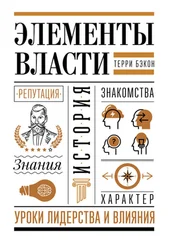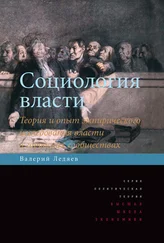Michael W. Kraus, C. Huang and Dacher Keltner . Tactile Communication, Cooperation and Performance: An Ethological Study of the NBA // Emotion. 2010 (10). P. 745–749.
Desmond Tutu . No Future Without Forgiveness. N.Y.: Doubleday, 1999.
Adam Smith . The Theory of Moral Sentiments. 1759.
Превосходный обзор работ о благодарности: Robert A. Emmons . Thanks: How the New Science of Gratitude Can Make You Happier. N.Y.: Houghton Miffl in, 2007.
R. A. Emmons and Margaret McCullough . Counting Blessings Versus Burdens: An Experimental Investigation of Gratitude and Subjective Well-Being in Daily Life // Journal of Personality and Social Psychology. 2003 (84). № 2. P. 377–389.
Frans de Waal. The Chimpanzees Service Economy: Food for Sharing // Evolution and Human Behavior. 1997 (18). P. 375–386.
Matthew J. Hertenstein, Rachel Holmes, Margaret McCullough and Dacher Keltner . The Communication of Emotion via Touch // Emotion. 2009 (9). P. 566–573.
S. B. Algoe, Jonathan Haidt and Shelly L. Gable . Beyond Reciprocity: Gratitude and Relationships in Everyday Life // Emotion. 2008 (8). P. 425–429.
Robert A. Emmons . Thanks: How the New Science of Gratitude Can Make You Happier.
A. M. Gordon et al. To Have and to Hold: Gratitude Promotes Relationship Maintenance in Intimate Bonds // Journal of Personality and Social Psychology. 2012 (103). P. 257–274.
F. N. Willis and H. K. Hamm . The Use of Interpersonal Touch in Securing Compliance // Journal of Nonverbal Behavior. 1980 (5). № 1. P. 49–55; R. Kurzban . The Social Psychophysics of Cooperation: Nonverbal Communication in a Public Goods Game // Journal of Nonverbal Behavior. 2001 (25). P. 241–259.
N. Gueguen . Nonverbal Encouragement of Participation in a Course: The Effect of Touching // Social Psychology of Education. 2004 (7). P. 89–98.
A. Grant and F. Gino . A Little Thanks Goes a Long Way: Explaining Why Gratitude Expressions Motivate Prosocial Behavior // Journal of Personality and Social Psychology. 2010 (98). № 6. P. 946–955.
M. Y. Bartlett and D. Desteno . Gratitude and Prosocial Behavior: Helping When It Costs You // Psychological Science. 2006 (17). P. 319–325.
Dacher Keltner et al. Teasing in Hierarchical and Intimate Relations // Journal of Personality and Social Psychology. 1998 (75). P. 1231–1247.
Michael W. Kraus et al. Taunting, Teasing, and the Politics of Politeness: How Sociometric Status Gives Rise to Expectation-Consistent Action // PLoS ONE. 2014 (9). № 8. e104737.
Обзор работы о пользе и вреде подтрунивания см. в статье: Dacher Keltner et al. Just Teasing: A Conceptual Analysis and Empirical Review // Psychological Bulletin. 2001 (127). P. 229–248.
James Pennebaker . Writing to Heal: A Guided Journal for Recovery from Trauma and Emotional Upheaval. Oakland, CA: New Harbinger, 2004.
D. P. McAdams . The Psychology of Life Stories // Review of General Psychology. 2001 (5). P. 100–122.
Более широкое обсуждение процессов, которые ограничивают власть, см. в статье: Dacher Keltner, Deborah Gruenfeld and Cameron Anderson . Power, Approach and Inhibition // Psychological Review. 2003 (110). № 2. P. 265–284. В одном из исследований испытуемые, которым внушили ощущение власти, более рискованно и эгоистично распоряжались чужими деньгами – за исключением тех случаев, когда они знали, что придется отвечать за свои действия и объяснять их. M. Pitesa and S. Thau . Masters of the Universe: How Power and Accountability Infl uence Self-Serving Decisions Under Moral Hazard // Journal of Applied Psychology. 2013 (98). P. 550–558.
S. L. Neuberg and S. T. Fiske . Motivational Infl uences on Impression Formation: Outcome Dependency, Accuracy-Driven Attention, and Individuating Processes // Journal of Personality and Social Psychology. 1987 (53). P. 431–444.
S. D. Preston and Frans de Waal . Empathy: Its Ultimate and Proximate Bases // Behavioral and Brain Sciences. 2002 (25). P. 1–71.
Примеры подражания см. в работах: U. Dimberg, M. Thunberg and S. Grunedal . Facial Reactions to Emotional Stimuli: Automatically Controlled Emotional Responses // Cognition and Emotion. 2002 (16). P. 449–471; R. S. Miller . Empathic Embarrassment: Situational and Personal Determinants of Reactions to the Embarrassment of Another // Journal of Personality and Social Psychology. 1987 (53). P. 1061–1069.
J. Hogeveen, M. Inzlicht and S. S. Obhi . Power Changes the Way the Brain Responds to Others // Journal of Experimental Psychology: General (in press).
J. L. Lakin, V. E. Jefferis, C. M. Cheng and T. L. Chartrand . The Chameleon Effect as Social Glue: Evidence for the Evolutionary Signifi cance of Nonconscious Mimicry // Journal of Nonverbal Behavior. 2003 (27). P. 145–162.
К числу отделов мозга, входящих в сеть эмпатии или «ментализации», относятся дорсомедиальная префронтальная кора, медиальная префронтальная кора, кора передней/задней части поясной извилины, височно-теменной узел и задняя верхняя височная борозда.
K. A. Muscatell et al. Social Status Modulates Neural Activity in the Mentalizing Network // Neuroimage. 2012 (60). P. 1771–1777.
Эти идеи можно найти в литературе по «интегративной сложности», процессу, в котором человек рассматривает несколько точек зрения на проблему, будь то переговоры, конфликт с идеологическим противником или требующая решения задача. Интегративная сложность приводит к лучшему результату в социальных взаимодействиях, таких как переговоры или мозговой штурм. См.: P. Suedfeld and P. Tetlock . Integrative Complexity of Communications in International Crises // Journal of Confl ict Resolution. 1977 (21). P. 169–184; Deborah Gruenfeld . Status, Ideology, and Integrative Complexity on the U.S. Supreme Court: Rethinking the Politics of Political Decision Making // Journal of Personality and Social Psychology. 1995 (68). P. 5–20.
Читать дальше
Конец ознакомительного отрывка
Купить книгу












